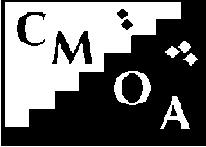

Who
are we ?
some Australia Wide statistics on CMOs
(NB:
"CMOs" are not just CMOs. We can also be known as
"Hospital MOs" and as "other salaried
hospital doctors" as well as "Senior Medical
Practitioners / Non-specialists")
| The Australian Institute of Health
and Welfare (AIHW) publishes statistics on
Registered Medical Practitioners in each State and
Territory of Australia. This analysis is available in full
from the "AIHW
website" at http://www.aihw.gov.au/[search their site for
"MEDICAL LABOUR FORCE"] Selected statistics and statements specifically relating to CMOs, HMOs and other salaried hospital doctors from surveys conducted on the Australian Medical Workforce in 1995 & 1996 have been summarised below First, some Terminology: CMOs are but one (albeit important) sub-group of the Australian Medical workforce. The AIHW primarily groups CMO type doctors within the category "Hospital non-specialist workforce". This includes:
You may note that the AIHW also refers to "CMOs, HMOs and other salaried hospital doctors" collectively as "Other Salaried Hospital Career Practitioners", describing us as "medical practitioners not undertaking specialist training who practise unsupervised in hospitals". In most
States these practitioners are referred to as "Career
Medical Officers".
|
1995
|
1996
AIHW included the following statement with its commentary on 1996 medical workforce data:
|
For those seeking more information, the CMOA website does provide more detailed descriptions of AIHW data relevant to CMOs in 1995 & 1996. This is provided in "ACROBAT" format. (ie:you will need "Adobe Acrobat Reader" to view these files). Clicking on the links below will automatically "open" Acrobat Reader if it is already installed on your computer. If not, consider downloading and installing Acrobat Reader from the link below:
1995 data relevant to Australian CMOs
1996 data relevant to Australian CMOsEven more information is available directly from The Australian Institute of Health and Welfare (AIHW) website. It provides full statistics relating to the Medical Labour Force in 1995 & 1996
Click here to visit the "AIHW website"
[search their site for "MEDICAL LABOUR FORCE"]
![]()
DISCLAIMER:
This page is
designed for the sole use of medical practitioners
The information
contained within has been provided in good faith.
However, it may
contain opinions and errors in fact. Therefore all information is
not to be relied upon by any party.
It is presented to stimulate debate amongst the medical
profession only
Consult your industrial adviser for clarification.
